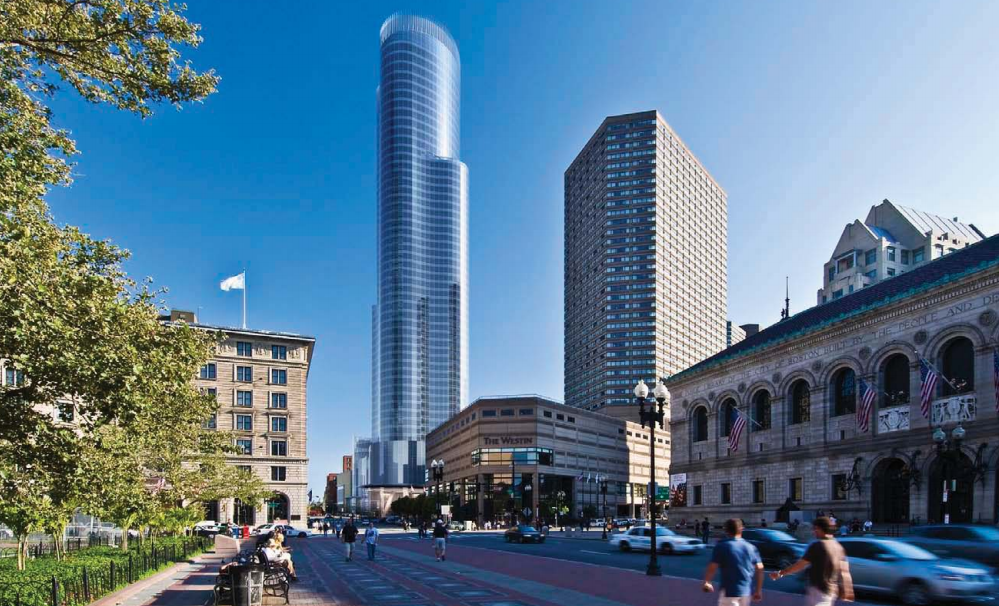
At its board meeting on Thursday evening, the Boston Redevelopment Authority approved plans to add an additional five affordable housing units to the Copley Place project. For some nearby residents, though, it isn’t enough.
Copley Place will soon be transformed into a 569-foot tall mixed-use building with 2-stories of retail and restaurant space located at the base and 542 residences on top (109 condos, 433 apartments). The addition of 5 more affordable units brings the building’s total to 76.
The Copley Place project stems back to the late 1970s when Simon Property Group came to terms on a lease in 1978 and pledged 25 percent of future residential units would de designated for lower-income earners. That lease agreement expired in 1995.
BRA amendments under Mayor Tom Menino, in hopes of catalyzing a developmental boom, made it so that only 15 percent of on-site housing units had to be made affordable or the developer could contribute money to community funds or some of the units off-site. Simon is offering approximately $20 million in public benefits, including $1 million to the city’s public art fund, and $250,000 each to the Friends of Copley Square and the Southwest Corridor Park Conservancy.

So while 76 affordable units is certainly better than 71, it only constitutes about 14 percent of all Copley Place living spaces – a far cry from 25 percent.
Mel King, the former State Representative from the South End and Professor Emeritus at MIT, a longtime resident of Yarmouth Street claimed it was maliciousness by Mayor Menino that sparked the reduction in affordable units. He accused Mayor Menino of not wanting lower-income earners living in such a high-end building and high-end neighborhood.
“The mayor didn’t want to have those units on the site,” he said. “Please. What kind of people and city are we?”
BRA board member Ted Landsmark, who voted against moving the project forward at this time, questioned why Simon couldn’t reach the 25 percent mark if they were willing to continue adding units and how long they’d be able to keep the 76 units as affordable.
Representatives from Simon made it clear that several design and functionality revisions were made at the behest of public opinion, such as wind mitigation, which leads Landsmark to believe the company is capable of providing more for those in need.
The 25 percent agreement, he said, was “an ethical commitment developers made to offset patterns of economic segregation spreading out from the south end certainly through the back bay.”
He added, “the ethical commitment to keep this a city where all kinds of people feel comfortable coming and going in all kinds of neighborhoods is one you’re showing here but the question is how long will that last and how long will people know?”
The Simon rep mentioned that these units would remain affordable or at least 50 years.
Overall the Copley Place project will renovate 115,000-square feet of the existing Neiman Marcus, build another 115,000-square feet of retail space and outdoor public space.

